August 2022
Posted: 8/23/2022 10:00:29 AM
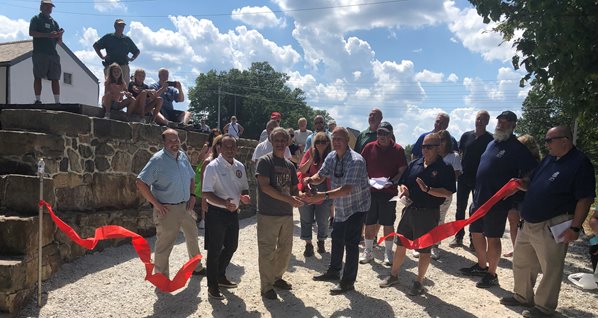
The Borough of Wharton celebrated the completion of a 16-year-long project to restore Lock 2 East, an integral part of the former Morris Canal, and the adjacent Lock Tenders House, with a ribbon cutting ceremony during its annual Canal Day festival Saturday.
The NJTPA Board of Trustees worked with the New Jersey Department of Transportation (NJDOT) to allocate $3.4 million in federal Transportation Alternatives Program funds for the project, which totaled $4.7 million.
David Behrend, NJTPA Acting Executive Director, called the site an “important piece” of the planned Morris Canal Greenway, which is envisioned as a 111-mile continuous trail connecting the Delaware River in Phillipsburg to the Hudson River in Jersey City, closely aligned with the former canal. Wharton and Morris County officials are actively involved in the Morris Canal Working Group, which the NJTPA coordinates, and participated in the agency’s 2018 Morris Canal Greenway Corridor Study, which developed the route and design for the planned trail.
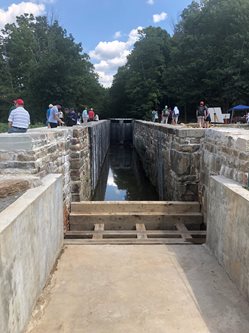 “Thanks to projects like this one here today – and partners across six counties – we’re gradually making that vision a reality,” he said.
“Thanks to projects like this one here today – and partners across six counties – we’re gradually making that vision a reality,” he said.
The Morris Canal opened in 1831 connecting Phillipsburg to Newark and was extended to Jersey City in 1836. The canal included a system of 23 lift locks and 23 inclined planes to overcome an elevation change of 1,674 feet.
John Manna, President of Wharton’s Canal Day Association and the restoration project’s coordinator, explained that the original lock gates and walls were bulldozed into the lock when it was decommissioned after the canal closed in 1924.
Through careful excavation, the lock components were unearthed and used to rebuild the structure. Once the Lock 2 East restoration project is completed in a few months, it will function as it once did more than 100 years ago, raising and lowering the water level by 8 feet. Manna’s dream is to one day have a replica canal boat built to illustrate how Lock 2 East functioned. The Lock Tenders House, once in ruins, was also reconstructed and will serve as a museum once it opens later this year.
“I think future generations will benefit from this restoration,” Manna said. “I think it will stand the test of time.” 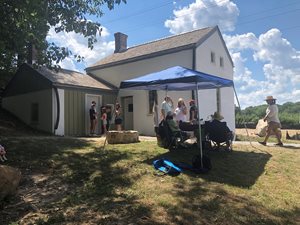
Wharton Mayor William Chegwidden thanked the many partners that made the project possible, including the NJTPA, NJDOT, Morris County and the New Jersey Historic Trust. He also thanked Manna for all his work over the years.
“This has been a long project and really, I give so much credit to John Manna here. He has kept this thing rolling, he has been our boat captain,” Chegwidden said. “I said let’s make Wharton a destination and we did.”
The NJTPA and NJDOT are accepting applications for the next round of Transportation Alternatives Program funding. Applications are due November 3, however anyone interested in applying must schedule a pre-application meeting by September 30. For additional information visit njtpa.org/TASetAside.
Posted: 8/18/2022 1:15:06 PM
A new Statewide Freight Plan would identify and inventory bottlenecks, develop freight strategies, policies and performance measures, and create an investment plan to support the Garden State’s multimodal freight operations.
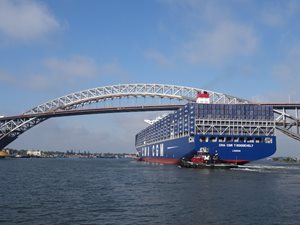 The New Jersey Statewide Freight Plan was last updated in 2017. Since then, the state has seen an expansion of e-commerce, accelerated by the COVID-19 pandemic,
The New Jersey Statewide Freight Plan was last updated in 2017. Since then, the state has seen an expansion of e-commerce, accelerated by the COVID-19 pandemic, a growing focus on equity and quality of life, as well as the availability of higher quality data, according to Genevieve Clifton, manager, maritime resources, freight planning and grants management for the New Jersey Department of Transportation (NJDOT). Despite challenges, the state’s freight industry is generally thriving, she added, during a presentation to the NJTPA’s Freight Initiatives Committee on Monday.
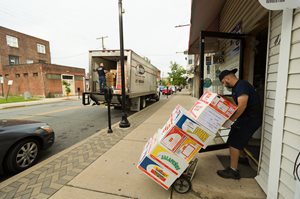 The NJTPA has been proactive with subregional studies focused on freight,
The NJTPA has been proactive with subregional studies focused on freight, said Stephen Chiaramonte, supervising transportation planner and assistant vice president at WSP, a consultant working on the state’s freight plan update. Hudson County is conducting a truck routes assessment and Middlesex County a freight movement study; Union County recently wrapped up its Truck Mobility Study; and Monmouth County completed a freight study in 2019 all funded through the NJTPA. Chiaramonte said these studies “show a significant level of investment and interest in freight planning in the region.”
Chiaramonte, Clifton and others working on the plan provided an overview of the 2022 update, requirements that changed since the 2017 plan, and sought input from committee members and freight stakeholders in attendance. Key new freight plan requirements include assessing truck parking facilities and examining impacts of e-commerce on freight infrastructure.
The 2022 Statewide Freight Plan is due to be approved by the Federal Highway Administration by the end of the year, Chiaramonte said.
New Jersey was the first state DOT to complete a comprehensive look at multimodal freight in 2007, Chiaramonte said, but it was not a federal requirement until 2015 when the
Fixing America’s Surface Transportation (FAST) Act mandated freight plans every five years. That mandate was reduced to every four years under the Infrastructure Investment and Jobs Act (IIJA), which was adopted last year.
The updated Statewide Freight Plan will assist NJDOT in prioritizing freight investments across the state.
The plan is tied to National Highway Freight Program (NHFP) funding and a recognition of the need to understand how, where and what goods move on the state’s multimodal freight network, providing an inventory of existing conditions and identifying needs and challenges. NHFP funding totaled some $420 million in New Jersey alone, which was leveraged for “big ticket and big visibility” projects, like the I-295 Missing Moves project and the I-80 Riverview Drive project, Chiaramonte said.
Click here to view the presentation and meeting recording.
Posted: 8/18/2022 12:32:53 PM
“Imagine in the coming decades that not a single person in the United States dies in a traffic crash. Thinking about safety this way requires a paradigm shift in how we perceive the problem,” said Caroline Trueman, manager of the Safe Streets and Roads for All (SS4A) grant program at the Federal Highway Administration. She spoke at a joint meeting of the NJTPA’s Planning and Economic Development and Project Prioritization committees on Monday. According to Trueman, in 2019, 36,096 people were killed in crashes in the United States, including 6,205 pedestrians.
From 2009 through 2019, the number of pedestrians struck and killed in motor vehicle crashes increased by more than 50 percent, she said. To reverse the trend and reach the goal of zero deaths, Trueman urges the adoption of a Safe System approach: “Rather than accepting fatalities and serious injuries as a price for mobility, the philosophy of the Safe System approach is grounded in an ethical imperative that no one should be killed or injured when using the roadway system.”
She said that implementing the Safe System approach requires moving away from several traditional safety paradigms and instead:
- Seeks to prevent death and serious injuries rather than preventing crashes;
- Designs for human mistakes and limitations, trying to improve behavior;
- Attempts to reduce kinetic energy;
- Aims to share responsibility among system users, managers, and others rather than asserting that only individuals are responsible; and,
- Proactively identifies and addresses risks instead of reacting based on crash history.
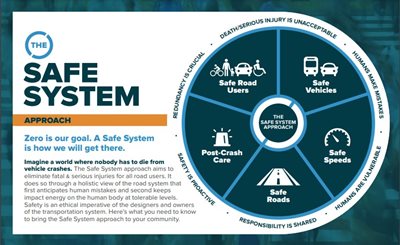 T
The Safe System approach is not a new concept, having existed in countries around the world for more than 30 years. It'
s based on a framework developed by other Safe System adopters outside the United States, including Sweden, the Netherlands, Australia, and New Zealand. Early adopters have seen marked decreases in traffic fatalities across their roadway systems — at least a 50 percent decline in fatalities, Trueman said. During the same period, fatalities in the U.S. dropped by only 11 percent. But she said efforts are underway to implement the Safe System approach more fully here.
In particular, she encouraged attendees to take advantage of the new SS4A grant program, which is accepting applications through September 15 at 5 p.m. (For additional information visit
njtpa.org/iija.)
The Safe System approach addresses the safety of all road users on an equal basis, including those who walk, bike, drive, ride transit, and travel by other modes. It acknowledges human limitations, and sets expectations for travelers who have the responsibility to operate, to the best of their ability, within the boundaries set by system managers. Education and enforcement can help to guide user behavior, Trueman said.
At the same time, she said, a key focus is to reduce death and serious injuries through design that accommodates human mistakes and injury tolerances. This includes designs that lower vehicle speeds like a
modern roundabout which forces drivers to slow down. Tru
eman said a reduction of 3 mph in average speed on a road with an average speed of 30 mph is expected to reduce crashes resulting injuries by 27 percent and fatalities by 49.
Over the past quarter-century, the town of Carmel, Indiana, has taken a Safe System approach to intersection design, converting more than 125 intersections to roundabouts. Carmel has seen serious injury crashes reduced by about 80 percent and the number of crashes overall has reduced by about 40 percent, according to Trueman.
“Roundabouts move people through intersections more efficiently and safer than stop signs or signalized intersections,” she said, adding they eliminate right angle and head-on crashes.
More information on the Safe System approach is available at safety.fhwa.dot.gov/zerodeaths
Posted: 8/11/2022 2:58:25 PM
Proposals are being accepted for the FY 2023 Together North Jersey (TNJ) Vibrant Places Program, funded by the North Jersey Transportation Planning Authority (NJTPA).
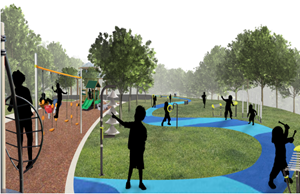 The program offers technical support for creative placemaking projects that enable future place-based investments, complementing other local economic development initiatives.
The program offers technical support for creative placemaking projects that enable future place-based investments, complementing other local economic development initiatives.
Eligible applicants include municipal and county governments, nonprofit, community-based or non-governmental organizations (NGOs) in the NJTPA's 13-county region. Special consideration will be given to collaborations between municipalities, counties, and NGOs.
Examples of previous projects that received technical assistance include:
- Five sites along the Morris Canal Greenway in Passaic County identified as pilot locations for a public art engagement plan, with a goal of creating replicable templates for other sites along the Greenway.
- The Town of Dover created a Downtown Dover Visitor’s Guide along with economic revitalization strategies for the downtown area of the Morris County town.
- The Borough of Bound Brook created a new visual identity that was incorporated into wayfinding signage and other visual media. The Somerset County borough also conducted public engagement and field visits to better understand the history and character of destinations that could be incorporated into a wayfinding system.
- Custom logo designs were developed for the Middlesex Greenway, along with a short video highlighting the need for improved signage along the greenway and examples of signage used in other greenways and parks around the state.
- The Urban Essex Coalition designed a temporary creative lighting display along NJTRANSIT rail viaduct underpasses along the Morris & Essex rail line, laying the groundwork for creative placemaking efforts along stations throughout the corridor.
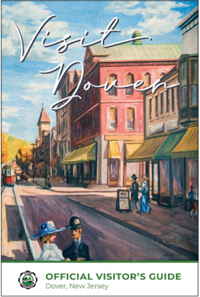
Up to four projects will be selected for technical assistance services in the form of staff time from
The Voorhees Transportation Center (VTC) at Rutgers University and other experts. Projects should be small in scale and must be completed within three to five months and no later than May 31, 2023.
Evaluation criteria and detailed application instructions can be found on the
Vibrant Places Program webpage.
The deadline to submit proposals is September 15 with notice of decisions in October. Projects are anticipated to begin in late 2022.
For more information, contact Miriam Salerno at
[email protected]